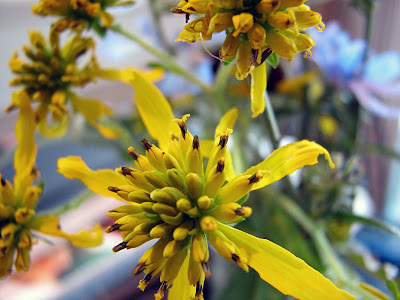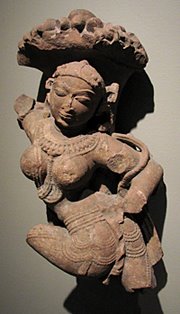Thanks to our many friends who have asked how Samba, our beloved Rottweiler, is doing. We learned in June that Samba, who turned 8 this summer, has
osteosarcoma, an aggressive and incurable form of bone cancer. Rotties get a lot of negative press as a result of owners who don't understand how to manage and care for their dogs. Properly raised and trained, however, they are devoted and delightful companions. And Samba is one of the best. We were devastated when we learned that he has this terrible disease, which occurs all too often in large breed dogs.
We noticed Samba was limping after a camping trip, and found a lump on his front left leg just above the pastern. We thought he had sprained his leg, but our vet said he was afraid the situation was much worse. An x-ray indicated he was right. We took Samba to the
Veterinary Specialty and Emergency Center in Overland Park, Kansas for more x-rays and diagnostic tests, all of which confirmed the original diagnosis.
We read all we could about the disease, talked to other friends who own Rotties, and joined the
BoneCancerDog Yahoo eGroup. This latter resource proved to be one of the most helpful and best in the decisions we made about Samba's care. Second only after Dr. Heather Heeb, the canine oncologist at VSEC.
Many dogs with Samba's condition live for only a few months. The average survival time is four to six months. Dogs who have their leg surgically removed and then get chemotherapy tend to have better survival rates, some living as long as a year or two after diagnosis. We scheduled Samba for surgery, but on the day we took him in, when the orthopedic surgeon examined Samba, he told us he didn't think surgery was a good choice for Samba. He said most of the dogs who have amputations are in so much pain they can't put any weight on the affected leg. But Samba, though he was limping, was putting pretty much his full weight on the leg and didn't seem to be in much pain. In addition, large Rottweilers often have a difficult time getting around when a front leg is removed: a back leg removal is easier for them. He told us that some dogs remain in the hospital for as much as a week or two after their surgery before they can get around well enough to go home.
That was it for us. Samba hates being separated from us. So much so that we have not boarded him since he was a year old. We even got an RV so he could go on vacations with us. Staying in the hospital for a week or two is something that he might never really get over.
So instead of surgery and chemo, we opted for radiation therapy (three treatments in three weeks) and intravenous pamidronate treatments (a medication to strengthen his bones) once a month. Samba is also getting a Deramaxx painkiller pill once a day, and we switched him to a grain-free diet: Innova EVO kibble flavored with EVO canned chicken and turkey. Samba didn't like the kibble that well, but he is nuts for the EVO canned food and would probably eat rocks if we put the canned food over them. We also reduced his kibble by one cup a day (he now gets two cups) and added one can of green beans. The green beans add bulk without additional calories which is helping Samba lose a little weight.
We are thrilled to report that Samba has responded exceptionally well to this course of treatment. He has not limped since his first radiation treatment and has not suffered from vomiting or diarrhea. He goes in for his third pamidronate treatment next Monday (September 10). He is full of energy and fun and having the time of his life. What's more, follow-up chest x-rays indicate that the metastatic tumor in his lungs, if that is what it is, has not grown larger and no additional tumors have appeared.
We are crossing our fingers and hoping Samba makes it to his ninth birthday next summer. But no matter what, we are determined to keep him with us and as comfortable and as happy as we can for as long as possible. Here is a picture I took of Samba lounging on our back porch on Labor Day.
 (c) 2007 Rob Esson Productions. All rights reserved.
(c) 2007 Rob Esson Productions. All rights reserved.















